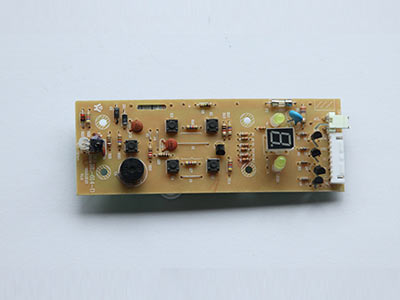The working principle of the fan control board mainly involves three core links: signal reception, processing and execution. The following is a detailed explanation of how it works:
A, signal reception
The fan control board receives signals from various sensors or external devices through the input interface on it. These signals may include temperature readings from a temperature sensor, speed instructions set by the user through the control panel, or control signals from a computer or other device. After receiving these signals, the control board will conduct preliminary processing to ensure the accuracy and effectiveness of the signal.
2. Signal processingThe microprocessor (MCU) or controller on the control board is the core component of signal processing. The microprocessor will analyze and process the received signals according to the preset procedures and algorithms. This process may include steps such as filtering, amplifying, analog-to-digital conversion (if the signal is analog) of the signal in order to convert the signal into a digital signal that the microprocessor can understand and process.

In the signal processing stage, the microprocessor will also calculate the speed or working mode that the fan should run according to the current environmental conditions (such as temperature, humidity, etc.) and the user's Settings (such as speed gear, working mode, etc.). This calculation process may involve complex control algorithms, such as PID control algorithms, to ensure that the fan can operate exactly as the user intends.
Three, executive control
After determining the fan's speed or operating mode, the microprocessor sends a control signal to the fan's drive circuit. These control signals may be voltage signals, current signals, or pulse width modulation (PWM) signals that drive the fan motor to operate at a predetermined speed.
The drive circuit is the key component that connects the microprocessor to the fan motor. It is responsible for converting the control signals emitted by the microprocessor into electrical signals capable of driving the operation of the fan motor. Under the action of the drive circuit, the fan motor begins to rotate and drive the fan blades to produce air flow, so as to achieve the purpose of heat dissipation or ventilation.
Four, feedback and adjustment
In order to ensure that the fan can run stably and meet the needs of the user, the fan control board is usually equipped with a feedback mechanism. By monitoring parameters such as the current, voltage or speed of the fan motor, the control board can know the running status of the fan in real time and adjust it as needed. For example, if the current of a fan motor is too large or the speed is unstable, the control board may automatically reduce the speed of the fan or take other measures to protect the motor and the overall system.
In addition, some advanced fan control boards have intelligent control functions. They can automatically adjust the fan speed according to changes in ambient temperature to achieve more accurate heat dissipation. At the same time, these control boards can also communicate with computers or other devices to achieve remote monitoring and control functions.
In summary, the working principle of the fan control board is a complex signal processing and control process. By receiving, processing, and executing control signals, the fan control board ensures that the fan operates stably as intended by the user and meets various heat dissipation and ventilation needs.About
Company Profile Corporate imageApplication CasesProduct
News
Company News Industry News Common problem+86 769-81555631-808
Monday to Sunday 8:30-21:30
(Welcome to call us for consultation)
 App
App